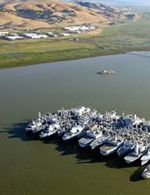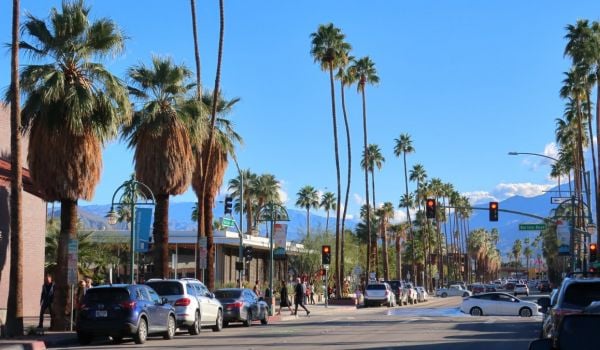For over 100 years, the United States Navy and Maritime Administration (MARAD) has stored decommissioned warships in the waters of Suisun Bay, the body of water connecting Northern San Francisco Bay, San Pablo Bay and the Carquinez Strait.
Suisun Bay looks like the board of an amateur’s game of Battleship – gray, plastic (in this case, metal) boats filed neatly along straight lines, side-by-side in the ocean. The game’s most common strategy is to spread out to make it difficult for the enemy to notice you. Apparently, the lazier government and military administrators should play more Battleship. For San Francisco-area maritime scientists, it was rather easy to locate the source of 20 tons of lead, zinc and copper pollution. It was leaking from the 30+ warships floating in Suisun for the last 60 years.
They’re nicknamed “Mothball Fleets,” ships fully-equipped for service but either not needed or outdated, waiting in reserve. It’s not known how many of these ghost ships we own, and the only people who found them worth mentioning were environmental groups, who filed a “we told you so” lawsuit after a 2007 study revealed samples of water tested near the ships showed the potential to produce three-eyed fish.
After being struck in the head with this rock, MARAD has decided to do something about it. Brainstorming ways to remove the waste, one noteworthy idea was to attach vacuum bags to vacuums so that the lead paint wouldn’t fall into the water when the hulls of the ships are scrubbed. Who said these guys weren’t geniuses? Other ideas include moving the ships to a place where people won’t complain as much, like Vallejo, California, where people are poor. This idea was actually sponsored by environmentalists.
CBS reports- “Even environmentalists like Saul Bloom back the Vallejo idea. “Tow ‘em over there,” he says. “There are workers in that area that could be employed so why not make some sense of it all?”
And nothing makes more sense than bringing toxic waste the front yard of the poor, as Diana Lind reported in April.
So how would experts (namely, you) in innovative ideas for space deal with this kind of problem?
















